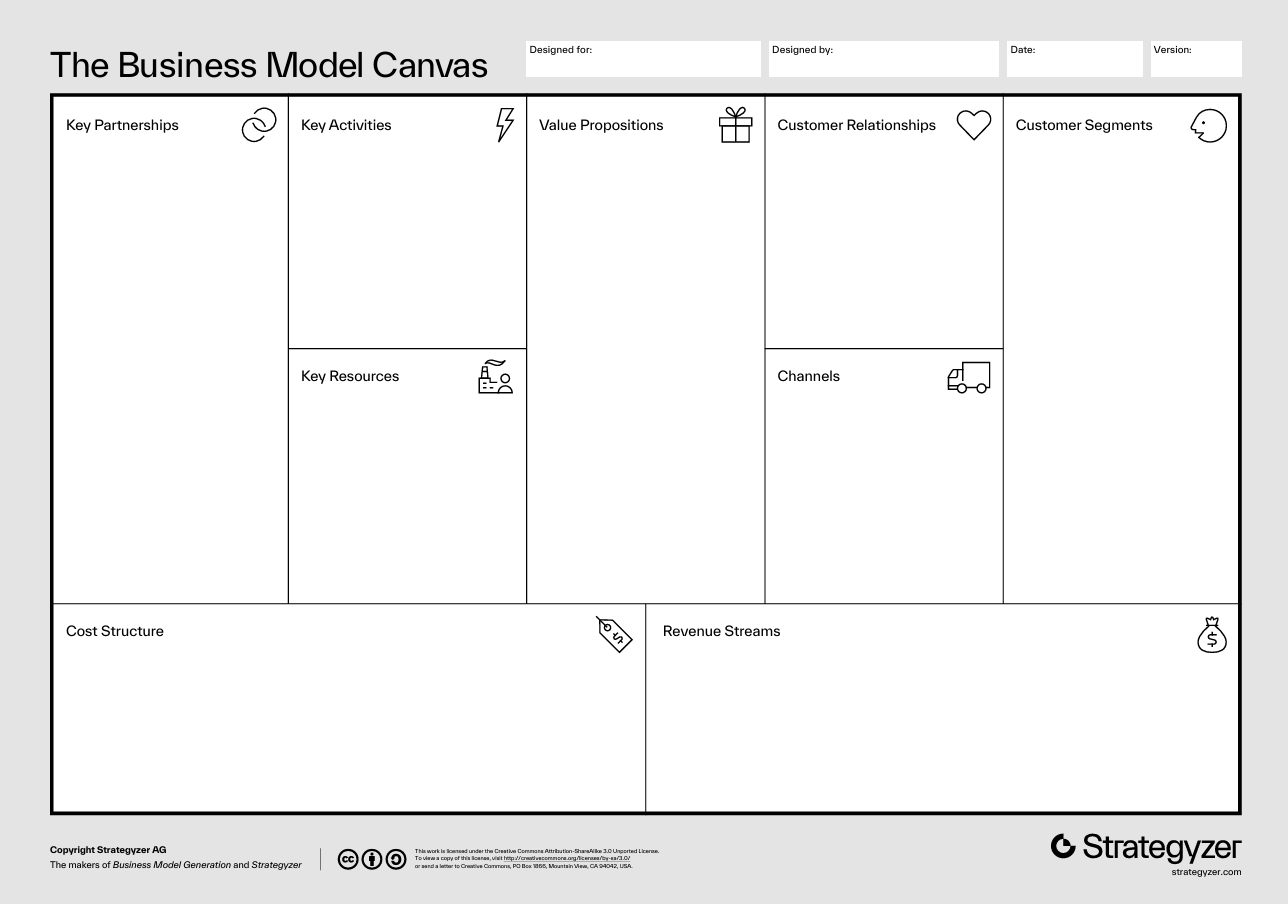Problem Definition and the Business Model Canvas
How to define an organization’s problem or opportunity and describe the elements of a business model.

Complexity offers organizations many advantages, but it can also become unmanageable and unpredictable (Reeves et al., 2020). Business models consist of different organizational elements that have many different connections to one another. The more elements a business model has, the more complex it becomes. How can we innovate complex business models, and where should we start? In this workshop, students learn how to define a problem and fill out the business model canvas.
Problem Definition
We first need to define a problem that we can use as the start of the business model innovation process. We can define a problem as a result or opportunity gap (Baaij, 2022). A result gap is the difference between an organization’s desired and realized performance. An opportunity gap is the difference between an organization’s new and old objective. For example, an organization can experience a difference between a desired profit of 250 million euros and a realized profit of 150 million euros. The result gap for this organization is 100 million euros.
Once we have identified the result or opportunity gap, we need to decompose this gap into its elements. We use the Minto Pyramid Principle to do so. For example, a profit gap can be decomposed into a revenue gap and a cost gap. The cost gap can be further decomposed into a variable cost gap and a fixed cost gap. The elements should be MECE: mutually exclusive and collectively exhaustive.
The Business Model Canvas
After we have defined the organization’s problem, we need to get a thorough understanding of its business model. The Business Model Canvas is a popular tool that can be used to describe the elements of an organization’s business model. These elements reflect an organization’s infrastructure, product or service offerings, customers, and finances.

Required Readings
- Reeves, M., Levin, S., Fink, T., & Levina, A. (2020). Taming complexity. Harvard Business Review, 98(1), 112–121.
Suggested Readings
- Baaij, M. G. (2022). An introduction to management consultancy. SAGE Publications Ltd.
The Course
This workshop is part of the master elective Business Model Innovation at the Radboud University Nijmegen. The course teaches master students how to redesign an organization’s business model and make it future-proof. In an increasingly interconnected world, organizations are confronted with unprecedented levels of turbulence, uncertainty, and complexity. Global trends such as rapid urbanization, climate change, global economic power shifts, digitalization influence the effectiveness and efficiency of existing business models. To ensure future competitive success, organizations must rethink the way they create, deliver, and capture value. In this course, students will learn how to design a future-proof business model in three steps: Analyze the current business model, Anticipate the future performance of the current business model, and Advise an organization about Business Model Innovations that are most robust and future-proof.
Related Posts

Teaching Lectures
A lecture about the representation of business models as systems of interconnected elements.

Teaching Lectures
The first lecture of the Business Model Innovation master course at the Radboud University Nijmegen.

Teaching Courses
This course teaches master students how to redesign an organization’s business model and make it future proof.

Teaching Courses